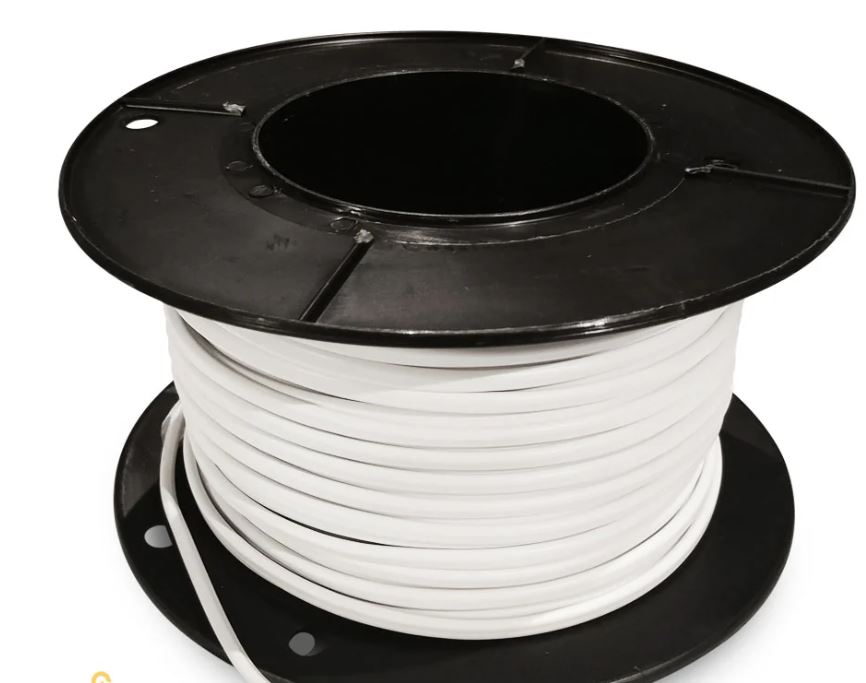Tinned core wire, also known as tinned copper wire, is a fundamental component in various electrical and electronic applications. Its widespread use is attributed to its unique properties, which combine the conductivity of copper with the corrosion resistance of tin. This article delves into the characteristics, manufacturing process, advantages, applications, and considerations for selecting tinned core wire, providing a comprehensive understanding of this essential material.
Characteristics of Tinned Core Wire
Tinned core wire is essentially copper wire that has been coated with a thin layer of tin. This combination of materials offers several key characteristics:
Corrosion Resistance: The tin coating protects the underlying copper from oxidation and corrosion, significantly extending the wire's lifespan, especially in harsh environments.
Enhanced Solderability: Tin’s properties make the wire more amenable to soldering, ensuring strong and reliable connections in electrical circuits.
Electrical Conductivity: Copper is known for its excellent electrical conductivity, which is only slightly diminished by the tin coating. This makes tinned core wire suitable for high-performance electrical applications.
Durability and Flexibility: The wire retains the inherent flexibility and strength of copper, allowing it to withstand bending and twisting without breaking.
Temperature Resistance: Tinned core wire can operate efficiently across a wide temperature range, making it suitable for various environments, from automotive to aerospace applications.
Manufacturing Process
The production of tinned core wire involves several stages:
Wire Drawing: High-quality copper rods are drawn through a series of dies to achieve the desired wire diameter. This process also enhances the wire’s mechanical properties.
Annealing: The drawn wire is annealed, or heat-treated, to relieve internal stresses and improve ductility, making it more flexible and easier to work with.
Cleaning: The copper wire is thoroughly cleaned to remove any surface impurities that might affect the tin coating process.
Tinning: The clean copper wire is passed through a molten tin bath or an electroplating process, coating it with a thin, uniform layer of tin. The thickness of the tin coating can be controlled to meet specific application requirements.
Cooling and Spooling: After tinning, the wire is cooled and wound onto spools for further processing or shipment.
Advantages of Tinned Core Wire
The unique properties of tinned core wire translate into several practical advantages:
Longevity: The tin coating prevents oxidation and corrosion, particularly in marine or industrial environments where exposure to moisture and chemicals is common.
Improved Soldering: The tin layer provides excellent solderability, reducing the time and effort required for making reliable electrical connections.
Versatility: Tinned core wire is suitable for a broad range of applications, from small electronics to large electrical systems in industrial settings.
Cost-Effective: Despite the added step of tinning, the benefits of increased lifespan and reliability make tinned core wire a cost-effective choice over its untinned counterparts.
Low Maintenance: The enhanced durability and resistance to environmental factors reduce the need for frequent maintenance and replacements.
Applications
The applications of tinned core wire are diverse, spanning multiple industries:
Electronics: In consumer electronics, tinned core wire is used for internal wiring due to its excellent conductivity and ease of soldering.
Automotive: The automotive industry relies on tinned core wire for wiring harnesses and electrical systems that require high reliability and resistance to harsh environmental conditions.
Marine: Tinned core wire is essential in marine applications where exposure to saltwater and humidity can rapidly corrode untreated copper wire.
Renewable Energy: In solar and wind power systems, tinned core wire is used for its durability and ability to withstand varying weather conditions.
Aerospace: The aerospace industry utilizes tinned core wire for its reliability, high performance, and ability to function in extreme temperatures and conditions.
Telecommunications: Tinned core wire is employed in the telecommunications industry for both internal and external wiring, ensuring long-term performance and minimal signal loss.
Industrial Machinery: In industrial settings, tinned core wire is used for wiring control panels, machinery, and equipment that operate in demanding environments.
Selection Considerations
When choosing tinned core wire for a specific application, several factors should be considered:
Wire Gauge: The diameter of the wire, or its gauge, should match the current-carrying requirements of the application. Thicker wires can carry more current but are less flexible.
Tin Coating Thickness: The thickness of the tin coating affects the wire’s corrosion resistance and solderability. Applications in harsh environments may require thicker coatings.
Temperature Ratings: Ensure the wire can operate within the temperature range expected in the application environment.
Flexibility: Consider the wire’s flexibility, especially if it will be used in applications involving frequent movement or bending.
Certification and Standards: Look for wires that meet industry standards and certifications, ensuring quality and safety compliance.
Conclusion
Tinned core wire is a versatile and essential component in modern electrical engineering, offering a blend of conductivity, corrosion resistance, and ease of use. Its manufacturing process ensures a durable and reliable product, suitable for a wide range of applications from consumer electronics to industrial machinery. Understanding its characteristics, advantages, and selection considerations can help engineers and designers make informed decisions, ensuring the longevity and efficiency of their electrical systems. As technology advances, the demand for high-quality tinned core wire is likely to grow, underscoring its importance in the ever-evolving landscape of electrical engineering.





Comments